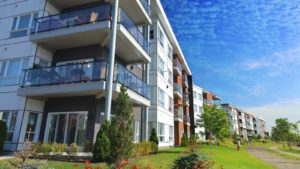Improving Wireless Connectivity and Efficiency in Multi-Unit Settings for Maximum Customer Satisfaction
Improving Wireless Connectivity and Efficiency in Multi-Unit Settings for Maximum Customer Satisfaction
Blog Article
In the current environment, having a strong and reliable Wireless signal is crucial, particularly in multi-unit environments like flats or condominiums. Many individuals depend on the network for work, school, and entertainment. Nonetheless, Wireless transmissions can struggle to reach every corner of these buildings due to various obstacles. These obstacles can include walls, levels, and other digital equipment that disrupt the signal. To enhance Wi-Fi connectivity and performance in these environments, it is important to understand some basic principles of wireless networking.
One efficient way to boost Wireless operation is by intelligently placing routers and extenders throughout the property. A central placement is usually ideal, as it allows the signal to travel uniformly in all areas. In spacious multi-unit units, several access points may be necessary. These devices help extend the reach of the Wi-Fi network and provide better service to residents in different parts of the building. Additionally, using devices that support the latest wireless standards can lead to faster bandwidth and better overall performance.
Another key aspect in improving Wi-Fi signal strength is reducing interference from other electronics. Most household items, such as ovens and cordless phones, can disrupt wireless signals. It is recommended to position modems away from important source these devices to ensure a clearer connection. Additionally, modifying the channel settings on a device can help reduce conflict from adjacent signals. Most routers by default choose the best band, but manually selecting a less congested one can improve performance.
Periodically updating device software is also crucial for maintaining maximum Wi-Fi stability. Vendors frequently issue updates that fix issues and improve protection features. Keeping the software up-to-date guarantees that residents take advantage of the latest improvements and protections against potential risks. Furthermore, monitoring bandwidth usage assists in detect which devices utilize more resources, enabling better management of existing capacity.
Finally, informing residents about proper usage for using Wi-Fi can greatly improve their performance. Simple measures such as connecting only necessary units, using wired links when feasible, and regularly restarting the router can improve reliability. By creating a culture that understands how to maximize their Wi-Fi usage, multi-unit environments can elevate user experience and ensure that all users enjoys a consistent internet service. This combined method of strategic placement, reducing interference, managing equipment, and informing users over at this website will result in a more efficient and satisfying Wi-Fi usage for all residents.